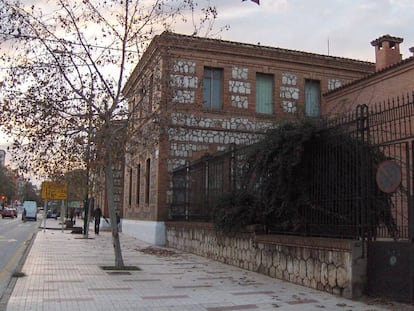Mexico wowed by Pixar’s Day of the Dead tribute ‘Coco’
The animated movie has already been seen by more than 21 million people in the Latin American country


Coco, the new Pixar animation inspired by Mexico’s Day of the Dead, has overcome pre-release rumors of cultural stereotypes to become the most-watched film in Mexico’s history
Five weeks after its premiere in the Latin American country, the film has been seen by more than 21.6 million people and has taken in around 1 billion pesos (€46 million) at the box office. In the United States, the film has also been a huge success, taking more than €60 million.
The success of ‘Coco’ has been attributed to the filmmakers’ lengthy research into Mexican culture
But Coco did not initially receive such a warm reception. When it opened on October 20 at the Morelia International Film Festival – one of the most important in Mexico – many Mexican producers, actors and directors boycotted the screening, arguing it wasn’t fair for a film produced by US giant Pixar to open a festival aimed at promoting the Mexican film industry.
But the movie, which will open in Spanish cinemas this week, quickly won over the Mexican public and critics thanks to its touching tribute to the Day of the Dead, one of the best-known traditions in the North American country.
Lee Unkrich, the director behind box office successes such as Finding Nemo and Toy Story 2, teamed up with filmmaker Adrián Molina to create a movie that is aware of Mexico’s cultural nuances and traditions.
The film follows the story of Miguel Rivera, a young boy whose mother was left heartbroken by a musician and subsequently banned all music from the household. But despite this, Miguel secretly plays guitar songs from his idol Ernesto de la Cruz – a musician inspired by the real life Mexican icons Jorge Negrete and Pedro Infante.

When the Day of the Dead arrives, Miguel, who is voiced by Spanish actor Luis Ángel Gómez, travels to the world of the dead where he meets Héctor, a lost oddball, who convinces Miguel to return to the world of the living. Héctor then promises to help Miguel show his family the value of music.
Critics have celebrated the film for creating authentic characters that move beyond cultural stereotypes, such as Warner Brothers’ character Speedy Gonzales, who spoke in an exaggerated Mexican accent and wore a giant yellow sombrero, or Panchito Pistoles, a trigger-happy rooster who teaches Donald Duck about Latin America in The Three Cabelleros.
Critics have celebrated the film for creating authentic characters that move beyond cultural stereotypes
The success of Coco has been attributed to the filmmakers’ lengthy research into Mexican culture. Between 2011 and 2013, the team visited Mexican states Guanajuato and Oaxaca, where they learned that there is more than one kind of mole, the traditional spicy chocolate sauce common in the south of Mexico, and were introduced to alebrijes, the multicolored handmade animal figurines, which feature prominently in the new Pixar animation.
The filmmakers also worked with two Latin American consultants to make sure the film was culturally sensitive and used suggestions from Disney’s Mexican-US team to add local color to the script. Miguel’s grandmother threatens him with a sandal, which is a typical scene in plenty of Mexican households, and when he enters the world of the dead, he first has to pass by state officials. It is an irony the Mexican public has lapped up: not even in death can you escape Mexican bureaucracy.
English version by Melissa Kitson.
Tu suscripción se está usando en otro dispositivo
¿Quieres añadir otro usuario a tu suscripción?
Si continúas leyendo en este dispositivo, no se podrá leer en el otro.
FlechaTu suscripción se está usando en otro dispositivo y solo puedes acceder a EL PAÍS desde un dispositivo a la vez.
Si quieres compartir tu cuenta, cambia tu suscripción a la modalidad Premium, así podrás añadir otro usuario. Cada uno accederá con su propia cuenta de email, lo que os permitirá personalizar vuestra experiencia en EL PAÍS.
¿Tienes una suscripción de empresa? Accede aquí para contratar más cuentas.
En el caso de no saber quién está usando tu cuenta, te recomendamos cambiar tu contraseña aquí.
Si decides continuar compartiendo tu cuenta, este mensaje se mostrará en tu dispositivo y en el de la otra persona que está usando tu cuenta de forma indefinida, afectando a tu experiencia de lectura. Puedes consultar aquí los términos y condiciones de la suscripción digital.
More information
Últimas noticias
Most viewed
- Sinaloa Cartel war is taking its toll on Los Chapitos
- Oona Chaplin: ‘I told James Cameron that I was living in a treehouse and starting a permaculture project with a friend’
- Reinhard Genzel, Nobel laureate in physics: ‘One-minute videos will never give you the truth’
- Why the price of coffee has skyrocketed: from Brazilian plantations to specialty coffee houses
- Silver prices are going crazy: This is what’s fueling the rally










































